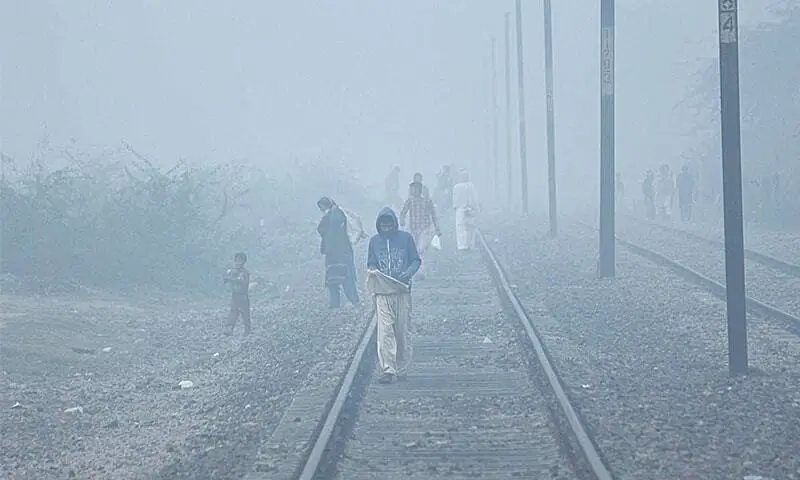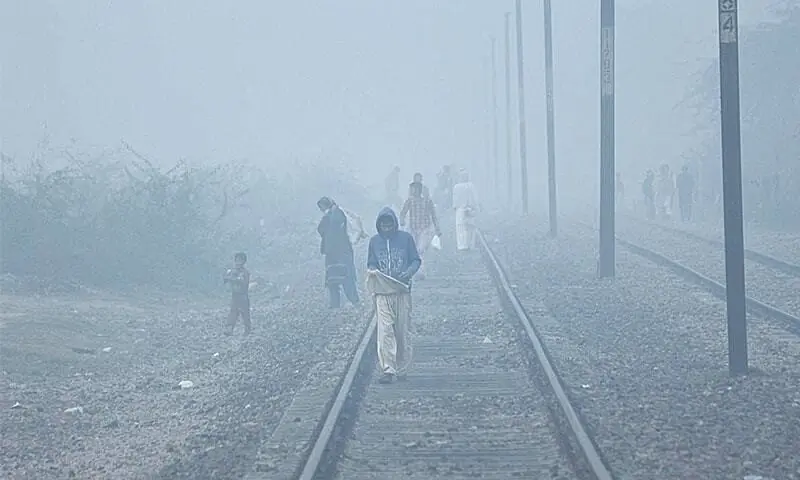
• UN-OCHA sit-rep says cold conditions precipitated by La Nina will especially impact KP, GB
• Phenomenon likely to disrupt Kharif crop harvesting, raise Glof risk
ISLAMABAD: Pakistan is likely to face one of its coldest winter this year in decades due to the La Nina climate pattern.
According to the latest situation report on Pakistan’s monsoon floods, compiled by the Intersector Coordination Group in collaboration with other partners, this could lead to colder-than-usual winter conditions, further stretching coping mechanisms of households affected by the floods, particularly in the mountainous regions of Khyber Pakhtunkhwa and Gilgit Baltistan.
A La Nina occurs when sea surface temperatures in the Pacific Ocean cool abnormally, triggering extreme weather shifts worldwide.
In its forecast for October, the report published by UN-OCHA says that the continued marginally negative phases of both the El Niño Southern Oscillation and the Indian Ocean Dipole will drive rainfall across Pakistan.
Northern Punjab, KP, AJK, and GB are likely to witness below-normal rainfall, while southern areas like Sindh, Balochistan, and southern Punjab may receive near-normal precipitation, it noted.
According to the report, the expected impacts of this phenomenon include possible disruptions to Kharif crop harvesting due to isolated storms, increased risk of dengue outbreaks in stagnant water conditions, higher chances of glacial lake outburst floods in upper areas, reduced river inflows affecting irrigation, elevated smog and air pollution in plains, and adverse effects on livestock health and fodder availability due to above-normal temperatures.
The report also takes stock of the deteriorating post-flood situation, especially in the context of “a diminishing response capacity both by government and humanitarian partners”.
“Despite robust response by local and international actors at the onset of the crisis, three months since, the presence of humanitarian partners and response capacity on the ground decreased. Pre-positioned stocks and initial emergency funds were used, with humanitarian partners now seeking additional funding for sustained interventions to ensure provision of basic services during the transition period from a humanitarian response to that of early recovery,” the OCHA report says.
Of particular concern is the long-term damage to livelihoods, which threatens recovery and self-sustainability. Crop fields were flooded, devastating harvests, livestock and fodder were swept away, and farm machinery and agricultural tools were damaged or destroyed, wreaking havoc on livelihoods and chances of restarting income generating activities in the near future.
According to a recent geo-spatial impact assessment conducted by FAO in flood affected areas, flood waters inundated around 1.2 million hectares in Punjab, the country’s food basket, damaging major rice, cotton, and sugarcane fields. The disaster coincided with the critical window for Rabi crop planting, further threatening food security and livelihoods and the ability to bounce back.
Remaining stagnant water in some flood-affected areas is also of concern as it causes significant health risks, including outbreaks of waterborne diseases like cholera, diarrhea, and typhoid, as well as vector-borne diseases such as malaria and dengue, which thrive in these conditions.
With over 229,760 damaged or destroyed homes, many families continue to sleep outside, with little protection from the elements or vector-borne diseases carried by mosquitoes.
Schools and health facilities have lost essential supplies and damaged or covered in thick mud preventing the resumption of classes or provision of health services. Food and fodder stocks were either washed away or now lay waterlogged and rotten, increasing food insecurity and reliance on humanitarian food rations.
Published in Dawn, October 14th, 2025

